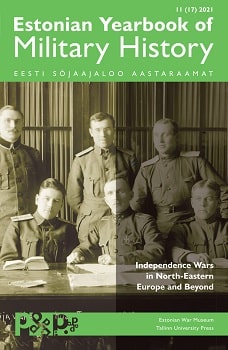Field Courts Martial, the Cheka and Penal Policy in the Estonian War of Independence in 1918–1920
Field Courts Martial, the Cheka and Penal Policy in the Estonian War of Independence in 1918–1920
Author(s): Toivo KikkasSubject(s): Criminal Law, Military history, Pre-WW I & WW I (1900 -1919), Interwar Period (1920 - 1939), Penal Policy, Court case
Published by: Tallinna Ülikooli Kirjastus
Keywords: Estonian War of Independence; 1918–1920; army field courts martial; death sentence; penal policy;
Summary/Abstract: Between December 1918 and December 1920, less then 300 men and women were sentenced to death in Estonian army field courts martial. Meanwhile the Red Terror of Cheka yielded 600 to 700 fatalities between December 1918 and early spring of 1919. It’s difficult to judge how Penal Policy of both sides affected soldiers. On both sides the majority of those who received the capital punishment were civilians, not soldiers. The legal basis for both sides offered a lot of freedom of interpretation with sentencing. Four months after the creation of Estonian field courts martial these institutions received quite detailed instructions. The Cheka however continued to work on guidelines of the ‘Red Terror’ Decree dated September 5th 1918, allowing them much wider freedom. However Estonian Field Courts Martial but also local Chekas worked in various ways. Also, it can’t be ruled out that Estonian society did not get the full picture of Penal Policy from newspapers.
Journal: Eesti Sõjaajaloo Aastaraamat
- Issue Year: 11/2021
- Issue No: 1
- Page Range: 133-180
- Page Count: 48
- Language: English

